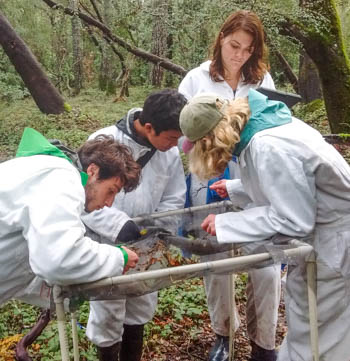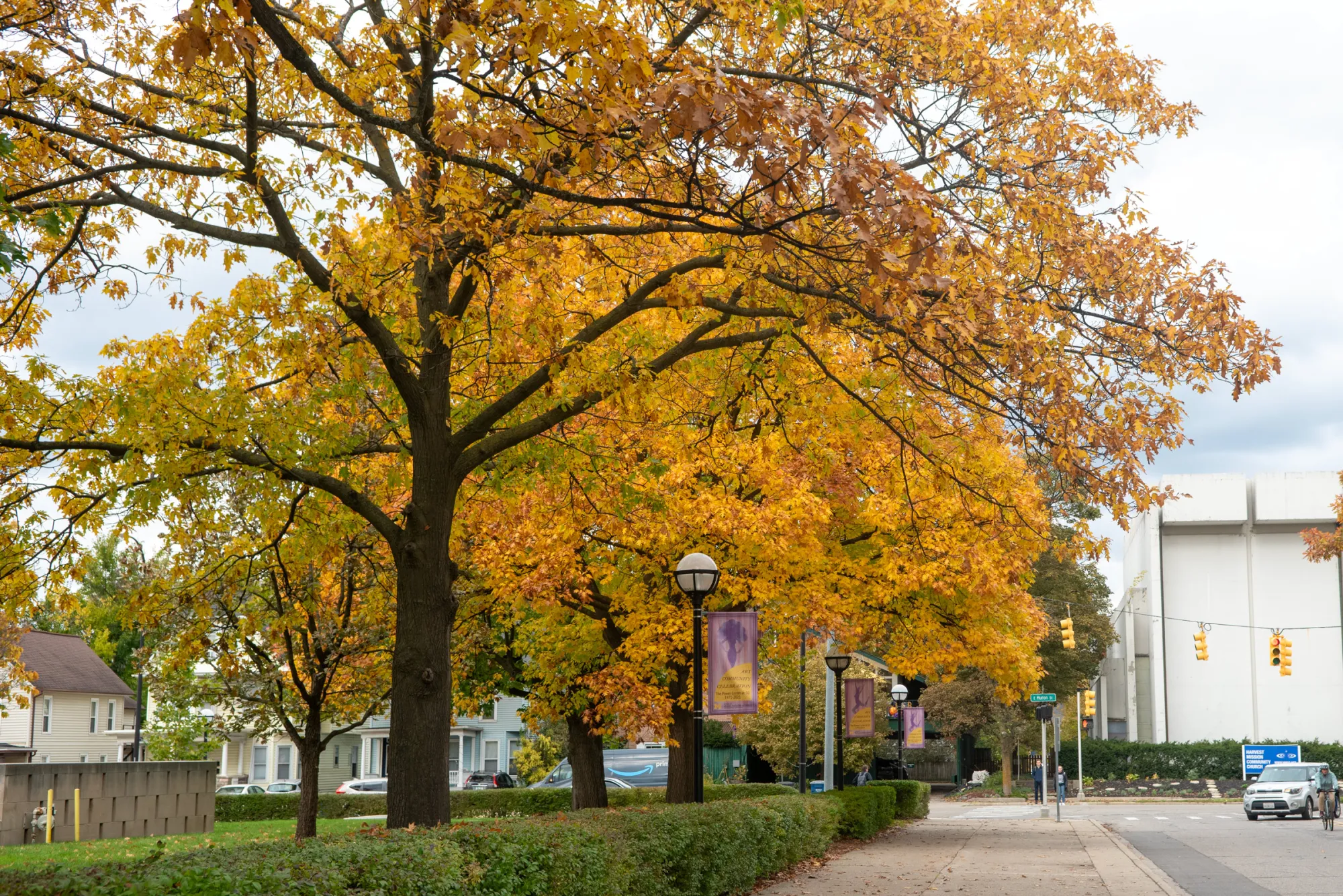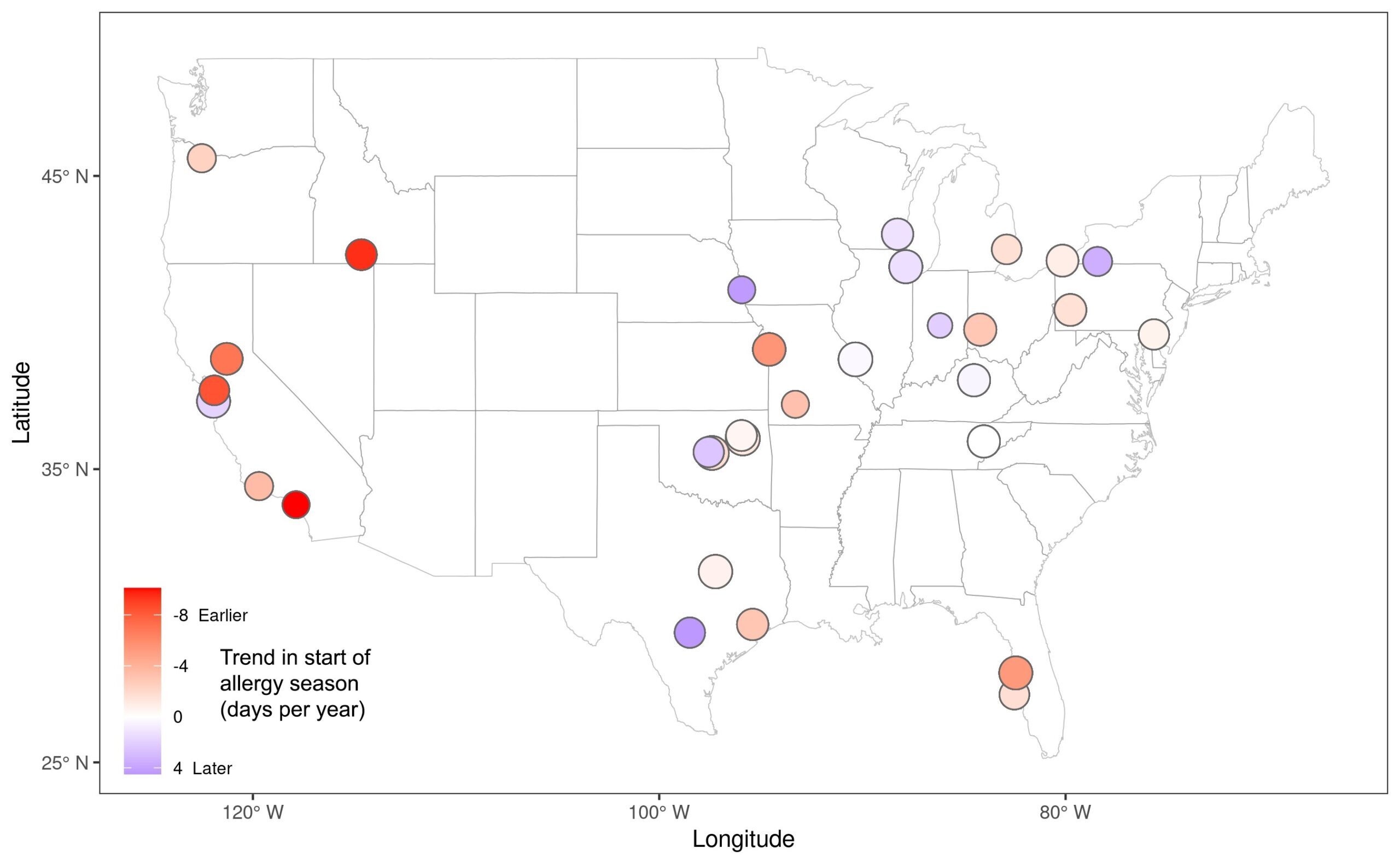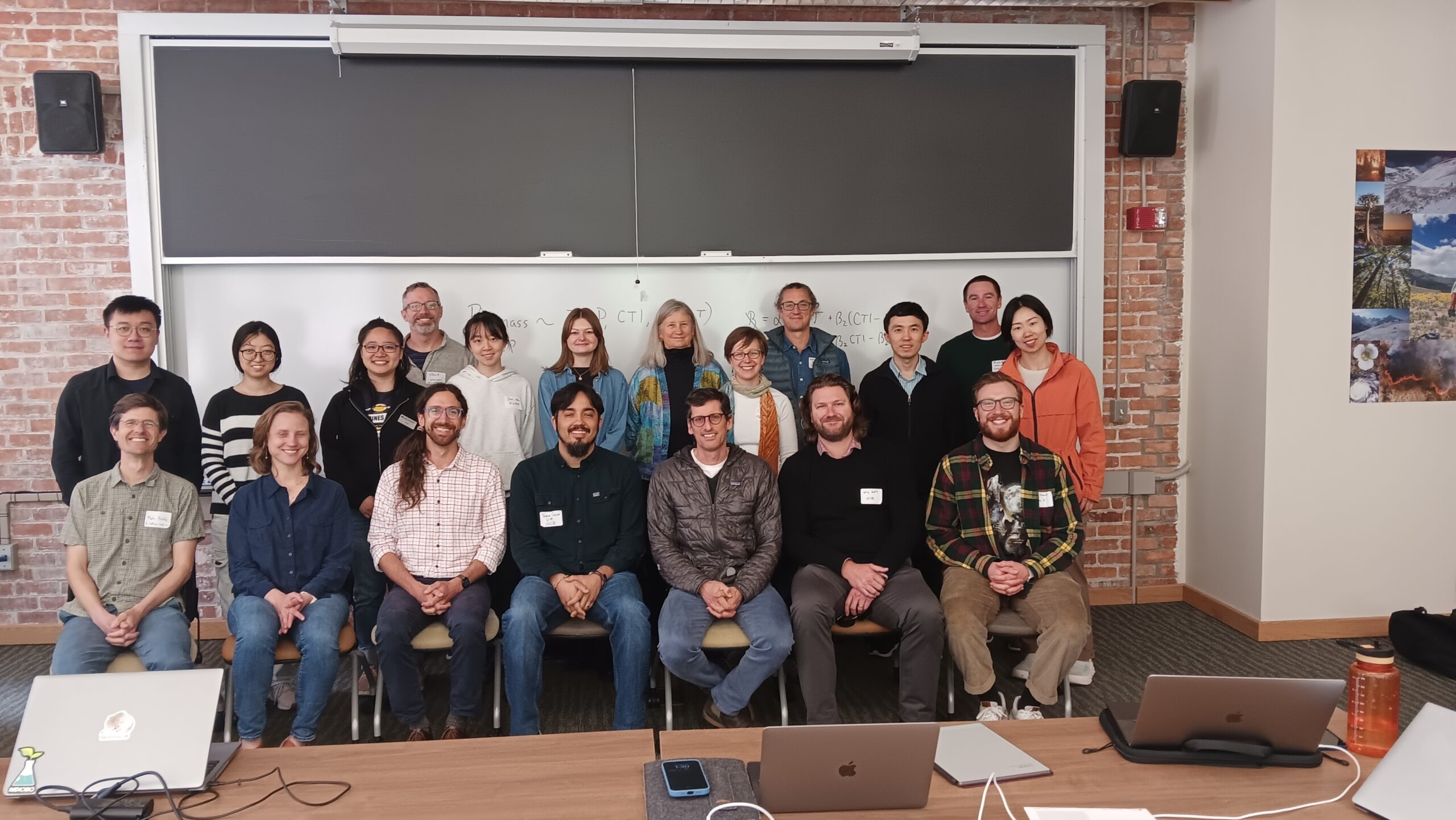Forest monitoring efforts contribute to new understanding of climate change impacts

Data collected by student interns at UC Santa Cruz’s Forest Ecology Research Plot (FERP) recently contributed to a breakthrough in understanding how climate change affects forests. A new study published in Nature Communications analyzed data from UC Santa Cruz and hundreds of other long-term forest monitoring sites across North America to document that climate change is causing declines in seed production for older, larger trees in western forests while increasing seed production for younger, smaller trees in East Coast forests.
On the West Coast, these reductions in reproductive ability could limit the capacity of forests to bounce back following damages or die-backs from rising temperatures, drought, or pest infestations driven by climate change. However, understanding this trend could help guide forest management practices and improve the modeling of future changes to North American forests.
Researchers from 48 institutions collaborated on this study, which was led by James S. Clark, Nicholas Distinguished Professor of Environmental Science at Duke University. UC Santa Cruz Environmental Studies Professor Greg Gilbert, who directs FERP, contributed data for the study and is listed as a coauthor alongside UCSC Assistant Professor of Environmental Studies Kai Zhu, who helped prepare FERP data for analysis and interpret modeling results.
Since 2007, dozens of students each quarter have participated in FERP internships through the Environmental Studies Department, and it was data collected by these students that made UCSC’s participation in the new paper possible.
Gilbert explained that student interns are responsible for mapping, measuring, and identifying all the trees on the almost 40-acre research plot, which is a part of the UCSC Campus Natural Reserve. Interns also monitor a system of mesh baskets called “phenology traps,” located throughout the forest, by checking them every two weeks to identify and count the seeds that collect inside.
“We can then use those data to estimate changes in the timing of production of flowers and fruits and seeds,” Gilbert said. “Or, as in this paper, we can look at estimates of the total amount of seeds being produced.”

Because interns also collect data showing which trees are near each trap, Gilbert said seed production levels can then be related to the size of the trees producing those seeds, which was a crucial component of the recent paper. Seed production initially increases as trees get larger, but it declines once trees grow past a certain size. This contributed to the disparate impacts of climate change on seed production from coast to coast.
East Coast forests contain many younger, smaller trees, and climate change is fueling their rapid growth, contributing to increased seed production. But on the West Coast, forests contain larger or more mature trees that have already maxed out their seed production, so climate change is more likely to contribute to a decline in their reproductive capacity. These trends held true for local forests in the Santa Cruz area, too.
“The UC Santa Cruz campus is covered with regrowth forest, as are many of the other forests in the area, and in that sense, they are a little bit more like East Coast forests that are recovering from massive clear-cut,” Gilbert said. “But many of our trees, such as the redwoods and the Douglas firs, grow to be very large rather quickly. So the really dominant species in our forests may have a reduction in their contributions to coming generations.”
Gilbert said it’s hard to know how these changes will play out across forests in our area, but any shifts in forest composition will take place over “tree generations,” or many decades. That gives scientists time to learn more and perhaps develop responsive forest management strategies. And Assistant Professor Kai Zhu, who specializes in using data science to study forest resilience and carbon sequestration, said the findings from the new paper will also help scientists to more accurately represent the role of forests in global climate models.
“We know forests are important because trees store a lot of carbon, but most of our climate models don’t currently consider the demographic processes happening in forests,” Zhu said. “It’s important to keep in mind that trees are living organisms. They can change. They can grow. They can die.”
While there has been a push to study tree mortality in response to climate change, Zhu said the beginning of a tree’s life had long been a missing piece. Now, the new paper equips scientists with a better understanding of how climate change affects tree reproduction, and life processes within forests can come into sharper focus. Ultimately, Zhu says this result demonstrates the scientific possibility of long-term monitoring sites like FERP and the value of students’ careful seed-counting efforts over the years.
“This kind of seed data is very hard to get,” Zhu said. “The only way to get this data is you have to have a field site. You cannot observe this through satellites. So these kinds of plots are really valuable, especially to look at biological or ecological processes. It’s very important work.”








